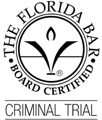One of the primary differences between state and federal court representation are the federal sentencing guidelines. These guidelines dictate the potential incarceration exposure a person faces when charged with a federal crime.
Often a person learns that they are under investigation for a federal charge before a grand jury indictment has been issued. It is critical to immediately hire expert legal representation prior to the indictment to formulate the best defense. In our office, when we are hired to represent a client who is under federal investigation we:
- Review the evidence that the US Attorney General’s Office or the Department of Justice has collected against our client; and
- Conduct a federal sentencing calculation to determine the client’s potential exposure if convicted of the charges.
Ben Stechschulte and a sentencing guideline expert will meet with our client and make decisions based on the evidence and information that we are aware of to determine their potential sentencing exposure. This process includes identifying:
 The Offense and Offense Level
The Offense and Offense Level
We use the evidence to determine which crime or crimes the client may be charged with and then go to the federal sentencing chart to get a baseline for the client’s potential exposure. For example, if someone is charged with trafficking five kilograms of cocaine, the mandatory sentencing guideline is incarceration for 135 to 168 months if found guilty. To best represent our client we look at the most serious offense and calculate the client’s exposure using this process.
Impact of Past Criminal History
If our client has a past criminal history and was sentenced to jail time or had any form of incarceration, we must review the criminal history category, which includes levels I through VI. For clients that are a level II or above, it increases their exposure. Returning to the cocaine trafficking example, if the person has 6 or 7 previous convictions, instead of looking at 135 to 168 months of incarceration, he or she is now facing 188 to 235 months.
Specific Offense Characteristics
These are additional factors that can increase the offense level. For example, a common specific offense characteristic in financial fraud cases is the amount of intended or actual financial loss that occurs due to the alleged criminal activity. The greater the loss the higher the crime will score on the offense level, which means increased exposure for the client.
The Human Factor
Not only are there ways to increase the minimum mandatory sentence, but certain factors can reduce it as well. We refer to this as the human factor though technically these are referred to as 3533 factors. Returning to our trafficking example, a client may be exposed to 135 to 168 months of incarceration. The court can look at certain factors to reduce the sentence, such as:
- The Nature and Circumstances of the Event
- The History of the Defendant
- Past Similar Cases of other Defendants
These human factors can include financial hardship, a mental health component, or other circumstance that justifies a reduced sentence.
In addition to the human factor, our clients have also reduced their sentencing due to providing substantial assistance and accepting responsibility.
Once this process is complete, we produce a report that identifies the client’s potential exposure if convicted of the offenses likely to be in the indictment. We make an educated yet informed decision as to what steps to take and develop a game plan to respond to the situation. We may:
-
- Take the Case to Trial. If we believe the US Attorney cannot prove the elements of the case, we will go to trial.
-
- Negotiate. In situations where the evidence shows that the client bears some amount of guilt, we will reach out to the US Attorney’s Office and federal case agents from the DEA, FBI, Homeland Security, or Immigration prior to the indictment and present evidence or information in attempt to get them to reduce the client’s exposure. During this process, we aggressively advocate and argue for our client on specific legal issues. Often, the Attorney General’s Office charges our clients at a higher level than is appropriate and we work to reduce the charges to best position our client under the circumstances. I have negotiated for clients many times to reduce their exposure and, in some instances, they have been able to avoid incarceration.
- Plead Guilty. If the facts warrant this option, we encourage our client to plead guilty and work present evidence to the judge on the “human factor” to reduce the sentence below guidelines.
If a client hires us after he or she has been indicted, we still conduct a sentencing guideline calculation. At this point we are in court and filing motions on our client’s behalf, arguing to secure bond, and we need to make a decision on whether or not to go to trial. The sentencing guideline calculation helps us answer that question.
Expertise with Federal Sentencing Guidelines
When facing federal charges, it is critical to hire an attorney who has extensive experience with the federal sentencing guidelines because it is such a structured system. Criminal defense attorneys who work only in the state courts do not have expertise on federal sentencing guidelines, which hampers their ability to serve their clients. Ben Stechschulte is a board certified criminal defense attorney with vast experience with federal sentencing guidelines and will conduct the calculations needed to formulate the best defense options.

 The Offense and Offense Level
The Offense and Offense Level







